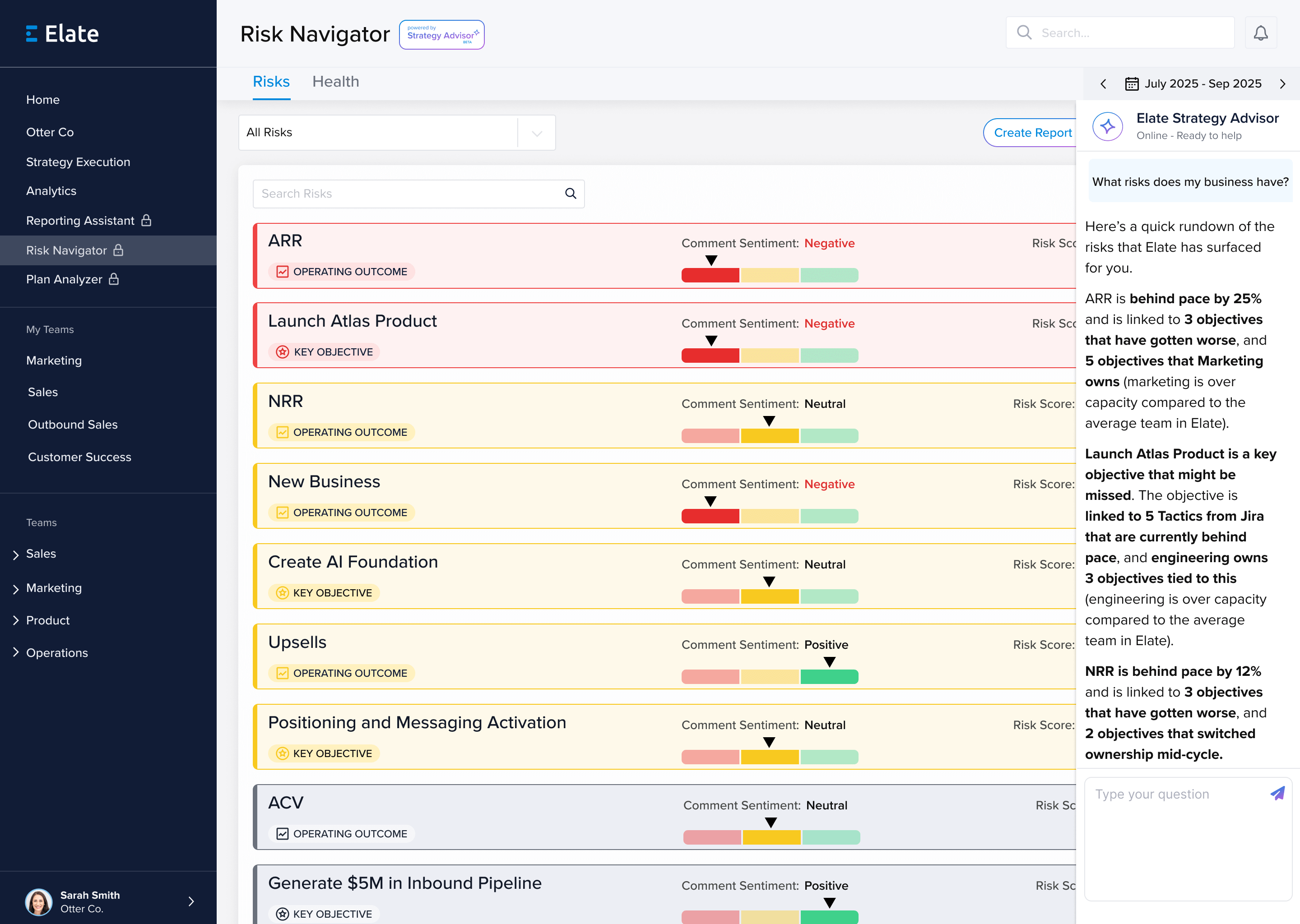What is a strategic plan framework?
A strategic plan framework is the structure you use to turn vision into choices, and choices into work. It gives leaders and teams a shared way to talk about priorities, initiatives, and outcomes.
Frameworks come in many shapes: OKRs, balanced scorecards, V2MOM, homegrown models, and blends of several. The specific labels matter less than having a simple, consistent structure everyone understands.
Why frameworks alone don’t align teams
Many companies choose a framework, run a great planning offsite, and then watch the energy fade as teams return to their day jobs. The problem is rarely the framework itself. It is the gap between how the plan is documented and how work is managed throughout the year.
Common breakdowns include:
- Plans living in slide decks no one revisits.
- Teams creating their own versions of the plan with different language.
- Leaders struggling to see how initiatives connect across functions.
- Updates happening in meetings instead of a shared system.
How to use your framework to drive alignment
To truly align teams, your framework has to show up in everyday work. A few practical moves:
- Keep the structure simple. Use a small set of levels (for example: themes, objectives, initiatives, outcomes) and stay consistent.
- Make ownership clear. Every objective and initiative should have a clearly named owner, even if execution is cross-functional.
- Connect meetings to the framework. Use the same structure for weekly, monthly, and quarterly reviews so plans and conversations stay in sync.
- Anchor updates in outcomes. Encourage teams to report on impact, not just activity.
How Elate helps teams align around your strategic plan framework
Elate is the AI-native strategy execution platform that turns your framework into a living workspace. Instead of reinventing your planning model, Elate adapts to it.
- Map themes, objectives, initiatives, and KPIs into one connected view.
- Use hierarchy views to show how leadership priorities connect to team-level work.
- Capture updates in context so they are easy to review before executive or board meetings.
Strategy Advisor, Elate’s AI engine for strategy, analyzes updates and KPIs across your plan to highlight themes and risks and to draft clear summaries for leadership and board reviews. That makes it easier to keep your framework connected to reality throughout the year.
To see how this looks in practice, watch a short Elate preview with your leadership team.
Frequently asked questions
Do we need to change our strategic planning framework to use Elate?
No. Most customers bring their existing framework and terminology. Elate is flexible enough to support a variety of structures and vocabularies, which keeps change management manageable.
What if different teams use different frameworks?
Elate can help you standardize where it matters and keep some local flexibility where it does not. Many organizations use a common company-level structure while allowing functions to manage tactical work in their preferred tools.
How often should we revisit our framework?
Most teams review the framework annually and validate themes and objectives quarterly. The important part is not perfection on day one, but building a rhythm where the structure evolves as the business changes.











